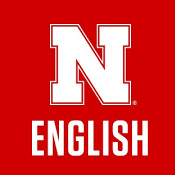English, Department of
Document Type
Article
Date of this Version
Fall 2010
Citation
Tulsa Studies in Women's Literature (Fall 2010) 29(2): 447-457.
Abstract
In the fall of 2009, as I was preparing to teach a senior capstone course for English majors on the nineteenth-century American novel and questions of literary value and the canon, I went trolling for suggestions of recent secondary readings about canonicity. The response came back loud and clear: “The canon wars are over. We all teach whatever we want to teach, and everything is fine.” My experiences with students suggest that, at least in American literary studies before 1900, the canon wars are not over, or, perhaps, they have entered a new stage. Most of my students had heard of James Fenimore Cooper, and a few had read him, but none (with the exception of one student who had previously taken an early American novel class with me) had even heard of his contemporary Catharine Maria Sedgwick. Most had heard of Harriet Beecher Stowe, and a few had previously read Uncle Tom’s Cabin (1852). Although some aspiring fiction writers initially objected to what they felt was an overly intrusive narrator, I succeeded in persuading the class to read Stowe’s novel with respectful attention. All of them had heard of Mark Twain, and all but a tiny minority had read his Adventures of Huckleberry Finn (1885). Those who had read the novel professed their admiration for the novel as one of the greatest ever written and certainly a prime candidate for the Great American Novel. When I asked them to read Jane Smiley’s infamous essay “Say It Ain’t So, Huck: Second Thoughts on Mark Twain’s ‘Masterpiece,’” in which she suggests that Huckleberry Finn was not that great and perhaps Uncle Tom’s Cabin was better, something curious happened.1 Not only did they defend Twain’s novel, but many abruptly turned on Stowe’s. In a radical reversal of their attitudes just a few weeks earlier, many now dismissed Uncle Tom’s Cabin as simplistic, racist, and sub-literary.
This chain of events in my classroom represents fairly, I believe, the understanding of American literary history before 1900 that prevails out-side of our scholarship and classrooms. Canonical male authors and their texts (and in the case of Huckleberry Finn, what Jonathan Arac calls a “hyper-canonical” text2) have visibility in the culture, and because these male-authored texts come prejudged, readers approach them with respect. However, women authors (with the exceptions of Emily Dickinson and, as a children’s author, Louisa May Alcott) remain largely invisible. When women authors and their texts do rise to visibility, they are still vulnerable to attack or dismissal.
Included in
American Literature Commons, United States History Commons, Women's History Commons, Women's Studies Commons


Comments
Copyright 2010, University of Tulsa. Used by permission.